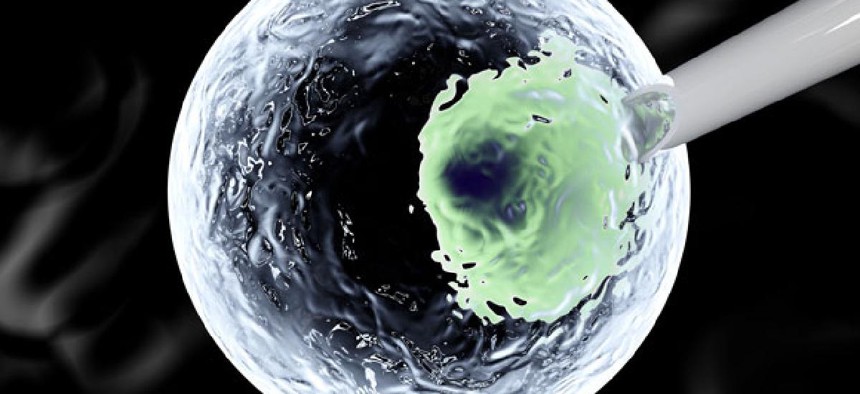This Stem-Cell Cloning Breakthrough Is Going to Revive the Same Old Debate

Spectral-Design/Shutterstock.com
Researchers in Oregon are creating perfectly matched human tissues through the process of cell cloning.
Researchers in Oregon claim to have solved the tricky problem of cloning human stem cells, but you're more likely to see a duplicate of a years-old ethics debate than you are a duplicate human.
The breakthrough is one that's been long sought after by biologists: creating perfectly matched human tissues through the process of cell cloning. In the past, researchers have had success with cloning animals through a technique known as somatic-cell nuclear transfer (SCNT), where the nucleus of an unfertilized egg is replaced with the DNA of a donor cell. (That's how Dolly the sheep was born.) The egg can then be turned into an embryo, with DNA that matches the original donor exactly. Later, stem cells from that developing embryo could be harvested and, in theory, be cultured to become almost any type of human cell there is. That would open a huge array of new medical treatments, from curing diabetes to fixing spinal cord injuries to providing rejection-proof organ transplants.
In the last decade or so, doctors had mostly turned away from SCNT as a means of producing "patient-specific" embryonic stem cells. They did so for a variety of reasons, but the biggest was that it didn't really work on humans. Researchers in South Korea claimed to have done just that in 2004, but their finding turned out to be a fake. Other attempts created imperfect results or were too expensive or inefficient. As a result, scientists have focused on other methods of attempting to create patient-specific stem cells. The focus now is on "reprogramming" adult cells so they become stem cells again, which has had limited success. (The new cells are called pluripotent cells, or iPS cells.) As one surprised researcher put it, "the most surprising thing [about this paper] is that somebody is still doing human [SCNT] in the era of iPS cells."
Read more at The Atlantic Wire.
(Image via Spectral-Design/Shutterstock.com)


